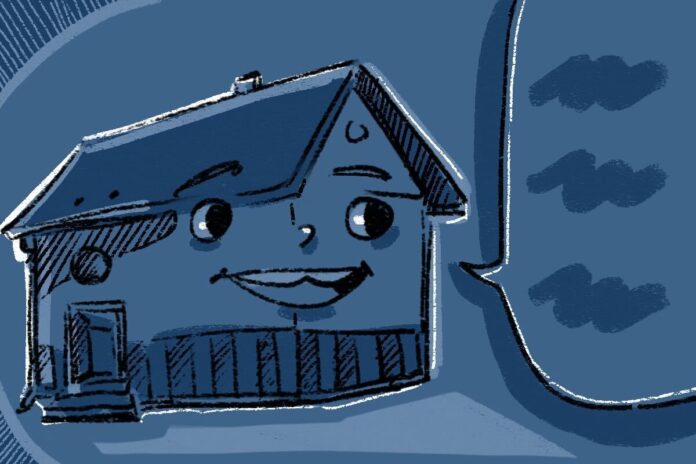
As students, many of us feel like home ownership is little more than a pipe dream.
The current news cycle does a good job of reminding young prospective buyers of the hurdles they face on the path to home ownership. There’s no denying the cost-of-living crisis has dominated the conversation, and Canadians’ anxieties over general affordability remain high.
As it turns out, students aren’t the only ones with a pessimistic view of home ownership in today’s climate. Despite a recent rebound in home sales, a September 2023 survey by Mortgage Professionals Canada found nearly half of Canadians believe they will never be able to own their own home.
A report from the Canadian Real Estate Association in August found that the average price of a home in Canada has stabilized at $667,317. That’s a really grave outlook on something which, a short time ago, seemed like a natural investment for a young professional looking to settle down.
Assuming Canadians are putting aside 6.2 per cent of annual income into savings,, it would take a first-time Canadian home buyer an average of just over seven years to save for a home. In places like Toronto, that number is as high as 40 years.
So much of our conversation around housing comes down to supply. It’s true, more homes need to be built, and fast. Conservative estimates say we need to build 3.5 million more homes by 2030 to restore any semblance of affordability in the Canadian housing market.
But we can’t begin to look at supply until we look at the barriers that make homes currently on the market inaccessible for most first-time buyers, and what prevents young Canadians from entering the housing market. That comes down to debt, wealthy investors and a flawed bidding process. Our solutions to housing affordability in Canada need to take a buyer-focused turn.
These could include initiatives to pay off student loans while investing in a home, applying rent-to-own concepts across the country, regulating of institutional investors, and banning the practice of blind-bidding.
The biggest barrier is debt. There is a huge imbalance, especially for those under 35, between income and personal debt. A lot of this debt is wrapped up in student loans, with Canadians owing an average of $28,000 toward their education. So what can be done?
For starters, the government can put more money in the pockets of Canadians who are working to pay off their loans while saving for a first home. Proposals from groups such as the Ontario Real Estate Association have recommended that the federal and provincial governments collaborate to match any contributions to a First Home Savings Account toward an equal reduction in a graduate’s student loans.
A solution like this not only helps with debt reduction, but puts a recent graduate closer to affording a down payment.
Another way to put more purchasing power in the hands of first-time buyers is to invest more in rent-to-own concepts across the country. This unique path allows prospective buyers to pay rent on a property for a fixed period, which is simultaneously turned into equity toward purchasing their rental.
Both of these solutions work to ease arguably the most significant financial burden a first-time home buyer faces: the down payment.
The best result of giving first-time buyers more flexibility is allowing them to build wealth rather than sink in debt. Given that the vast majority of Canadian households’ wealth is held in real estate, this might give the next generation wealth to fall back on.
Another major sticking point among Canadians is the home-buying process, as well pre-established standards as who can (and cannot) own a home in Canada.
The federal government recently extended its ban on foreign ownership of housing in Canada. While a step in the right direction, the action does little to address the encroachment of domestic investors in the Canadian housing market.
Data from the Bank of Canada shows that the share of new homes bought by Canadian investors has climbed steadily over the last decade, reaching almost 30 per cent of all new homes in the first three months of 2023.
Meanwhile, the share of first-time home buyers purchasing new homes has steadily declined. Couple that with a steady rise in house-flipping, and it’s no wonder the market is amplified.
Curbing this trend isn’t easy, not least of which is because buyers can’t know the sellers’ identity in blind bids, or the dollar amount of other bids — they can only who their agents are. Some have criticized the blind bidding process for its lack of transparency and tendency to produce higher selling prices.
Ontario has opted to allow sellers to allow an open-offer process on home-bidding if the seller chooses, however the provincial government has not gone so far as to ban blind bids outright.
Banning blind bidding, in addition to regulating the investors increasingly buying up Canadian homes, would help bring down housing prices by creating a more equitable playing field for first-time buyers. This can involve regulating the amount of properties institutional investors can acquire and rent out, or introducing proper rent controls to ensure rent remains consistent between former and prospective tenants..
Building more homes is the first step to a larger solution. But without giving families and students more purchasing power, we stand no chance of remedying our current housing woes.
Featured graphic by Angel Xing.





